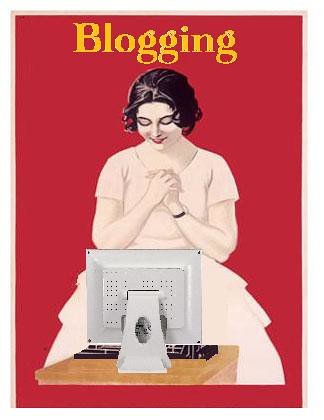 |
| Mike Licht, NotionsCapital.com |
You could pay to have a professionally designed webpage with your own domain name, and someday, you'll probably want to do that, but when you're first starting to build your platform, a blog is a relatively easy-- and free-- way to do it.
There a few choices of hosts, such as WordPress and Wix; I've used Blogger because it seemed the easiest to me. There are online tutorials that walk you through getting started.
The best thing about it is that you can start off very simply, using the templates provided, and slowly work your way up to a more complex blog as you learn more about it. You don't need to be very computer literate to get started.
Here are some general tips & helpful hints I've used which apply to whichever host you decide to use:
1) Make sure that your blog is linked to your Google+ profile. This tells the Google search engine it's yours, and makes it more relevant in search results. Go into your Google+ profile and edit your "About" section. If your blog is not listed in the blogs in the "Contributor to" section, add it. You can also embed a "rel=author" tag into your posts to make sure it's picked up by the search engine when it trawls your site. I haven't done this so far.
2) You can get social media buttons without needing to learn coding or download/upload the images, etc., by using the NiftyButtons social media button maker. It creates the HTML code for you and all you have to do is paste it into a HTML gadget or widget box. Authors, make sure to make note of the Bookbaby section. This area creates buttons to link to your booksellers, like Amazon, and iTunes. Make sure the sharing bar is enabled on your posts; you will have to manually install a StumbleUpon button.
3) Position your content correctly. Your sidebar should be on the left side, and the most important icons you want your visitors to see at the top of the bar, just like a page in a book. It's the way our eyes have been trained since childhood to read things.
 |
| SparkCBC |
5) A blog amplification group like Triberr will greatly expand your audience. See my article for further information.
 |
| Mike Licht, NotionsCapital.com |
Extra content is always something visitors love. Deleted scenes, excerpts, Spotify songlists, photos of some of the locations in your novel ... One of my fellow authors has recipes for regional dishes from where her novel is set. It gives readers a reason to come back if you add more on a regular basis.
7) Try to make your blog match the mood of the book itself. If your story is dark and mysterious, a pink, flowery blog that looks like it was plucked from an Easter basket is incongruous.
8) Try to keep the layout simple and clean. That's something I'm working on rectifying on my own blog because the sidebar was just choked with widgets. Just like having too many signs in one area, if you have too much junk on your sidebar, the good stuff gets lost in the clutter. Some of the things you don't need include:
- A hit counter-- your stats screen has that info
- A tag cloud or recent posts-- you can put it in the footer, or add a search bar, which looks cleaner
- An "About Me" section on the sidebar-- you can put it in a pages tab
- Group membership icons/widgets-- put them in the footer
- Members/networked blogs --put them in the footer, too.
 |
| Mike Licht, NotionsCapital.com |
9) Create an RSS feed for your blog. It's easily done in Blogger by adding an RSS gadget. This slideshow explains why it's so useful. Using the feed, you can set it up so your blog posts automatically appear on your Facebook timeline using an app like Social RSS.
10) Make sure your site is easy to navigate. If I want to buy your book right now, is there a tab or an Amazon icon that's easy to find? Same thing if I want to find other things you've written; do you have a tab or a link that's convenient and easy to spot?





